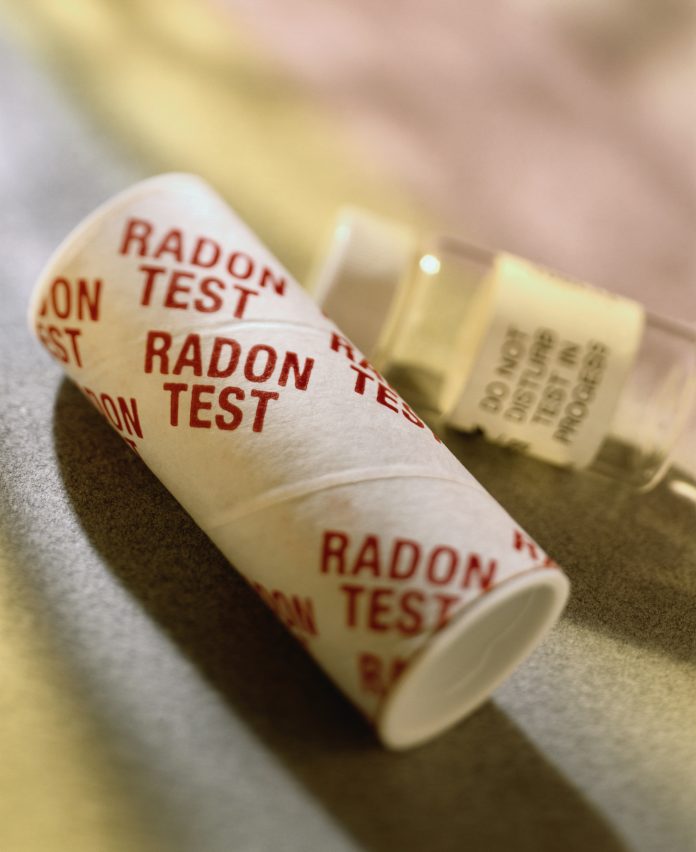Many couples have terms of endearment. “Honey,” “sweetie” or “darling” are all fairly common.
My husband’s affectionate nickname for me, however, is “Safety Patrol.” It is definitely not a popular lovestruck moniker. It can’t be found in rhyming poetry or song lyrics.
I have to admit, though, that it is an accurate description of me. I like the comfort of following the rules and choose to err on the side of caution when given a choice.
I really thought I had implemented all necessary safety measures in our home. We have multiple smoke detectors on all floors, and we even have carbon monoxide detectors. Under the kitchen sink, a fire extinguisher sits next to the dishwasher tabs.
Silent stalker
Little did I know, I was overlooking a major safety issue that silently stalks many homes — radon. I was completely clueless about the gas; I didn’t even know what it was or where it came from.
Radon is naturally occurring in the earth’s surface. When radioactive metals break down in rocks and the soil, the colorless and odorless gas works up through the soil and disperses quickly in the atmosphere.
The problem is that radon can enter houses and buildings through the basement, slab or crawl space. Cracks and holes in the foundation along with some building materials provide a route for radon to enter the house and increase exposure. Radon can also be present in groundwater and well water.
Obviously, we spend a lot of time outside and open windows seasonally. Winter weather forces us inside for a greater amount of time.
The catalyst to investigating radon was that a non-smoking extended family member was undergoing surgery for a suspicious-looking spot on her lung. Smoking is the number one cause of lung cancer and radon exposure comes in second. Being a smoker and having increased radon exposure is exponentially damaging.
Since our family member does not smoke, other areas of exposure to contaminants were investigated. When I heard about radon, I knew we had to test our home.
Testing options
There are several options for testing for radon. We chose to use a First Alert short-term test. Short-term kits contain charcoal that absorbs radon radiation over a 48 hour period. There are specific directions about where to place the kit.
I carefully checked the distance from the wall and floor. I also noted the time that I began the test and filled out the paperwork ahead of time. After the two days, I mailed our kit using priority mail. Our results came back in about 14 days.
Our results came with charts and a thorough explanation. The amount of radon is measured in picocuries per liter of air (pCi/L). If a home has a radon result of 4 pCi/L or greater, the Environmental Protection Agency and Surgeon General recommend homeowners take action to reduce the amount.
Thankfully, our result came back fairly low at 2.5 pCi/L. In true Safety Patrol form, I want to do another short-term test in our basement during a different season.
There are several other options for testing. Long-term tests are available that should be used for a minimum of 90 days. The long-term tests are higher in price, but provide a more accurate yearly average of radon exposure. State-approved contractors can also complete home radon testing.
Decrease exposure
Even though our result came back at 2.5 pCi/L, there are several steps we can take to further decrease exposure. To start with, cracks in our concrete floor can be sealed.
Also, positive ion generators and ceiling fans have been found to plate-out, or attach particles to walls and furniture instead of them remaining airborne and breathable.
Professional contractors are capable of removing radon from homes by installing a mitigation system. There are different types of mitigation systems, but the general idea is to continuously use a fan to pull air from the soil under the home and vent it outside. This prevents radon from ever reaching inside the house.
The earth’s crust provides people with all the minerals needed to survive. Even gems and precious metals add beauty while nutrients add sustenance.
However, gases like radon can also form that ultimately cause harm when trapped in both newer and older homes. Thankfully, once aware of the problem, there are steps to eradicate the issue and make a home safe again.














Your home is a place where radon exposure can be most prevalent. What makes radon dangerous is that it passes through places that are not easily reachable. You need testing and mitigation services provided by experts.